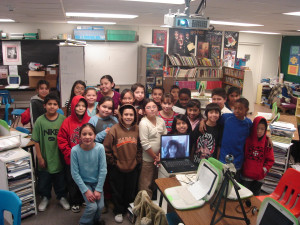Got the following email from Jo Scott at PAEMST today – I almost didn’t pass on the info since I applied a few years ago and wasn’t selected : )
Brian,
I work for the Presidential Awards for Excellence in Mathematics and Science
Teaching (PAEMST) and was wondering if you could post some information
regarding nominating teachers for the Presidential Awards.
The Presidential Awards for Mathematics and Science Teaching is trying to
gain a more diverse group of nominees by reaching out through several
different listservs/education blogs/education Web sites. We¹d love to
include our nomination information on your site‹below is the PAEMST
nomination information that we¹re using to influence
teachers/parents/administrators to nominate. If you can use it, great. If
not, thanks for your time.
Thanks so much,
Jo Scott
PAEMST
Teacher Outreach
703-265-2772 x14
Example of Posting:
Nominate Outstanding Teachers for the 2007 Presidential Awards for
Excellence in Mathematics and Science Teaching
Show your support for outstanding mathematics and science teachers in your
community by nominating them for the 2007 Presidential Awards for Excellence
in Mathematics and Science Teaching. Each year, on behalf of The White
House, the National Science Foundation selects highly qualified teachers
based on their deep mathematics or science content knowledge and their
ability to show evidence of student progress in these areas.
The call for nominations for the 2007 awards is open! The nomination and
application period for the nation¹s highest honor for mathematics and
science teachers will close May 1, 2007. Nominate 7th-12th grade teachers
today by visiting www.paemst.org
K-6th grade teachers may be nominated in 2008.
As presidential winners, award recipients receive the following:
[Hide Quoted Text]
>
> ·   A citation signed by the President of the United States.
> ·   The opportunity to join a dynamic network of Presidential awardees.
> ·   A paid trip for two to Washington, DC, to attend a weeklong series of
> recognition events and professional development opportunities.
> ·   Gifts from program sponsors from around the country.
> ·   A $10,000 award from the National Science Foundation.
>
>
> Nominate a teacher today! Eligibility requirements, nomination guidelines,
> and application information are available at http://www.paemst.org.

